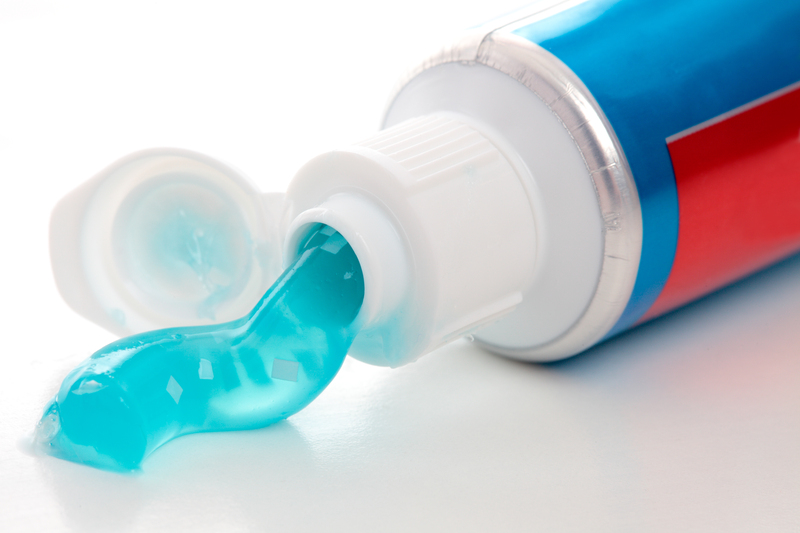Breakthrough Methods to Protect Sofa Covers in the Wash
Posted on 23/05/2025
Breakthrough Methods to Protect Sofa Covers in the Wash
Sofa covers are a fantastic way to preserve your furniture, maintain a fresh look, and keep your living space stylish. However, one major challenge many homeowners face lies in how to properly clean sofa covers without causing fading, shrinking, or damage to the fabric. If you are looking for the most up-to-date, reliable ways to wash couch covers and keep them in perfect condition, you're in the right place. In this article, we'll dive deep into breakthrough methods to protect sofa covers in the wash, answer all your questions, and give you expert-level guidance for maintaining your favorite slipcovers for years to come.
Why Proper Washing Techniques Matter for Sofa Covers
For many, the sofa is the heart of the home, and its cover endures daily wear, spills, pet hair, and more. Over time, built-up dirt and oils can degrade fabric fibers, causing colors to fade, textures to coarsen, and covers to lose their snug fit. Washing sofa covers correctly can significantly extend their lifespan, keeping your living area both clean and inviting. However, doing it incorrectly may lead to:
- Shrinking or distortion of the cover, making it difficult or impossible to refit
- Color fading or bleeding, resulting in a tired and worn appearance
- Fabric pilling and weakening, causing covers to fray or rip
- Detergent residue buildup, which attracts more dirt and allergens
Let's examine breakthrough methods that protect couch covers in the wash, so you can enjoy vibrant, comfortable seating for years.

Step 1: Identify Your Sofa Cover's Fabric Type
Not all sofa covers are created equal. The fabric type determines the ideal washing method. Common materials include:
- Cotton: Comfortable and breathable but prone to shrinkage if washed hot
- Polyester and microfiber: More robust, colorfast, and less likely to shrink
- Velvet, linen, or wool blends: Delicate and often requiring specialized care
Pro tip: Before proceeding, read the manufacturer's care label on your cover. This is the primary source for instructions on water temperature, cycle, and drying method.
Spot Test for Colorfastness
Before you wash the entire cover, spot test a hidden section by dampening it slightly with water and a tiny amount of detergent, then blot with a light-colored cloth. If color transfers, it's best to opt for professional cleaning or cold-water hand washing methods.
Step 2: Pre-Wash Preparation - The Key to Long-Lasting Sofa Covers
Effective sofa cover washing starts before you even turn on the washing machine:
- Vacuum thoroughly: Use an upholstery attachment to remove dust, crumbs, and pet hair. This prevents debris from creating micro-abrasions or becoming further embedded during washing.
- Pre-treat stains: Gently dab (don't rub) a stain remover suitable for your fabric onto any noticeable spots. Allow at least 15 minutes but avoid over-saturating the area.
- Close zippers, snaps, or Velcro: This will prevent snagging and ensure that the cover maintains its shape.
- Turn the cover inside out: This reduces friction on visible surfaces and helps preserve colors and fine textures.
Step 3: Selecting the Right Washing Method
The best washing protocols for sofa slipcovers balance thorough cleanliness with gentle care. Here are the three most breakthrough approaches:
1. Use a Protective Wash Bag for Sofa Covers
This innovative method has revolutionized home textile care:
- Invest in an extra-large mesh laundry bag (sometimes called duvet or blanket bags).
- Place your sofa cover inside. The bag acts as a protective barrier that prevents zipper snags, fabric stretching, and excessive spinning, which causes shape distortion.
- Opt for a cold, gentle, or delicates cycle. This ensures minimal agitation, which is critical for maintaining the integrity of both natural and synthetic fibers.
Mesh bags aren't just for delicates--they are true lifesavers for preserving the structure and beauty of your slipcovers!
2. The Power of Eco-Friendly, Low Suds Detergents
Many commercial detergents contain harsh chemicals and brighteners that can weaken fabrics and fade colors over time. For optimal sofa cover protection in the wash:
- Choose a plant-based, gentle detergent designed for sensitive fabrics. Look for those labeled hypoallergenic or suitable for delicates.
- Use half the recommended amount: Excessive suds can leave residues and attract more dirt in the future.
Bonus tip: Add a half cup of white vinegar to the rinse cycle to naturally soften fibers and brighten colors without leaving a scent.
3. Hand Wash When Possible
Hand washing provides total control over agitation and water temperature, significantly lowering the risk of shrinkage or pilling:
- Fill a bathtub or large sink with lukewarm or cold water
- Add your chosen gentle detergent and allow to dissolve
- Submerge and gently swish the cover; do not twist or wring
- Rinse thoroughly with clean water, pressing (not wringing) out excess moisture
While hand washing is more labor-intensive, it's often the best method to prolong the life of valuable or delicate slipcovers.
Step 4: Smart Drying Methods - No More Shrinkage!
Even the safest washing can be undone by poor drying techniques. To maximize protection for your freshly cleaned sofa covers:
Air Dry Whenever Possible
- Lay the cover flat on a clean, dry towel or drying rack, smoothing out wrinkles to preserve its shape.
- Flip periodically to allow even drying and prevent musty odors.
- Avoid hanging heavy covers from one point (like a line or clothes hanger), which can cause stretching.
If Machine Drying is Required
- Use the air fluff or no-heat setting for minimal risk of shrinkage.
- Check every 10-15 minutes, removing the cover while it's still slightly damp. This allows you to reshape and refit more easily.
- Avoid high heat at all costs, particularly for cotton, linen, or blended fabrics.
Reshape and Refit While Damp
One of the most valuable tips for protecting slipcovers in the wash: As soon as your sofa cover is barely moist, place it back on the sofa and smooth it into position. The final drying will happen as it conforms to your furniture, helping prevent warping and maintain a snug fit.
Step 5: Advanced Hacks and Breakthrough Products for Extra Protection
For those who want an extra edge in preserving their beautiful sofa slipcovers, consider these latest innovations and expert secrets:
Fabric Protector Sprays
- After cleaning and fully drying, treat your slipcover with a fabric protector spray designed to repel liquids, oils, and dirt.
- Follow instructions carefully for safe and even application.
Color-Catcher Sheets
- Place a color-catcher sheet in the washing machine when cleaning colored or mixed-fabric covers.
- This reduces the risk of dye transfer and fading, helping to keep colors bright wash after wash.
Enzyme-Based Stain Removers
- Enzymatic cleaners break down organic stains (food, sweat, pet accidents) without the need for harsh scrubbing or hot water--making them perfect for sofa covers.
- Apply before washing according to package directions.
Portable Steam Cleaners
- If machine washing is not possible, a handheld fabric steamer can freshen between launderings and kill bacteria and dust mites, all while avoiding direct water contact.
Step 6: Maintenance Between Washes
Protecting your sofa covers isn't just about washing, but also about what you do in between:
- Vacuum regularly to remove dust and allergens
- Spot-clean stains immediately before they set
- Rotate cushions and covers to evenly distribute wear
- Limit sun exposure to prevent fading and brittleness
Frequently Asked Questions About Washing Sofa Covers
Can all sofa covers be machine washed?
Most contemporary sofa covers are designed for easy washing, but always check the care label. Some luxury fabrics (suede, silk, lined velvet) or covers with elaborate trim may require dry cleaning only.
What temperature is best for washing sofa covers?
Cold or lukewarm water is safest for most slipcovers and helps prevent shrinkage and color run. Only use warm water if explicitly permitted on the care label.
How often should I wash my sofa covers?
For homes with kids, pets, or high traffic, wash every 3-4 months. In lower-traffic settings, every 6 months is usually sufficient. Vacuum and spot-clean in between washes to preserve freshness.
Is it better to air dry or tumble dry sofa slipcovers?
Whenever possible, air dry flat. If you must use a dryer, always use the lowest possible heat and remove while slightly damp to avoid shrinking.

Protect Your Investment: Why These Methods Work
In summary, the latest sofa cover care breakthroughs draw from textile science and practical home care wisdom. Using gentle, targeted cleaning techniques--such as large mesh laundry bags and mild, residue-free detergents--preserves both aesthetics and durability. Smart drying processes and regular maintenance complete the cycle, extending the life of your sofa covers and--by extension--your sofa itself.
With these breakthrough methods to protect sofa covers in the wash, you can maintain a fresh, luxurious living environment with minimal stress. Whether caring for an expensive bespoke cover, a family heirloom, or an everyday slipcover, these steps will help safeguard your investment and ensure your furniture always looks its best.
Conclusion: Maintain Fresh, Vibrant Sofa Covers With Modern Washing Techniques
Protecting your sofa covers in the wash boils down to awareness, preparation, and a few modern breakthroughs in home laundry care. By employing the techniques outlined above--including identifying your fabric, careful pre-treatment, using protective wash bags, gentle detergents, and air-drying flat--you can ensure that your covers remain beautiful and functional for years.
Don't let cleaning fears hold you back from enjoying a fresh, clean home. With these breakthrough methods, sofa cover washing becomes a safe, simple part of your regular household routine!
Keep these tips handy and share them with friends and family. A well-cared-for sofa cover is the key to stylish, comfortable living--no matter how busy your home may be.



